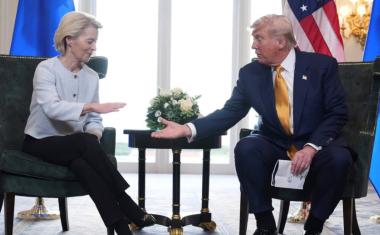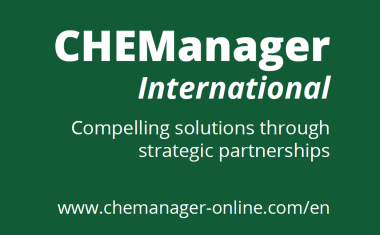Intellectual Property Protection in China: Better Than Many Think
In 2021, the new patent law came into force in China. It represents a significant strengthening of protection against patent infringements.
The loss of intellectual property has always been a major concern for foreign chemical companies active in China. On the one hand, there are many local companies looking to gain a competitive advantage that have ample access to funds for investment. On the other hand, the Chinese system for the protection of intellectual property – particularly patents – was regarded as insufficient and favored local over foreign companies. This was despite some success in chemical patent infringement cases in the 2010s, for example by Atotech, H.C. Starck, Invista and Bayer Crop Science.
While there was quite a bit of truth in this perception in the past, the situation has been improving substantially in the last few years. In 2021, the new Patent Law came into effect. It represents a substantial strengthening of the protection against patent infringements. In particular, the amount of statutory compensation for patent infringement is increased while the patentees’ burden of proof for actual damages is reduced. Specifically, in severe cases of willful infringement, damages of up to five times the actual damage may be awarded, making patent infringement a riskier proposition than before. Other changes increase the statute of limitations and the effectiveness of the enforcement process.
Another important change is that the amended patent law gives the China National Intellectual Property Administration (CNIPA) the power to hear major patent infringement cases of national significance upon the request of the patent holders. In fact, the maiden trial involved the infringement of a patent owned by Boehringer-Ingelheim (see table below for details). CNIPA’s expertise is substantially higher than that of provincial IP agencies, thus facilitating correct judgments.
Drivers behind these changes have been the increasing number of patents filed by Chinese companies and the explicit government goal to turn China’s economy into one driven by innovation. The government seems to understand this to mean providing incentives for innovation, as patents certainly are.
In fact, in 2021, China already authorized the largest number of patents of any country in the world, and in the past 5 years, this number has been growing at an annual average of 13.4%. In 2021 alone, the number of invention patent applications increased by 30%. And according to China’s development plan for intellectual property, the target for patent-intensive and innovative industries is to contribute 13% of China’s GDP by 2025, bolstering the role and thus the protection of patents.
Higher success rates for foreign companies
Furthermore, some recent papers, such as one published by Renjun Bian in the Berkeley Technology Law Journal (link), question the assumption that foreign companies are at a disadvantage in patent disputes in front of Chinese courts. Specifically, the author found that foreign patent holders were as likely as domestic patent holders to litigate and received higher win rates, injunction rates, and average damages. In addition, plaintiffs won in 80% of all patent infringement cases and automatically got permanent injunctions in 90% of cases where courts found patent infringement.
These findings are reflected in a number of recent cases involving foreign and domestic chemical companies in China, as shown in the table below. In all of these cases, the foreign plaintiff won the case.

Recent patent infringement cases in China won by foreign chemical companies. © Management Consulting - Chemicals
As the table above clearly indicates, there have been a few recent patent infringement cases successfully conducted by foreign chemical and pharmaceutical companies. Due to the limited number of cases, it is difficult to say for certain, but it appears that the more recent cases (particularly the FMC one) are handled more quickly than older ones (the Mitsubishi case, which stretched out for 6 years). This should also make it somewhat more worthwhile to pursue such litigation in the future.
The areas in which such litigation occurred stretches over a large range of products, materials and processes, covering pharmaceuticals, specific synthesis routes for specialty chemicals, and materials used for lithium batteries and other electronic applications. As such, it likely reflects more on the segments in which patentable innovation is concentrated, rather than specific areas vulnerable to patent infringement.
Although in several of the cases listed the defendants were ordered to pay damages, the sums involved are frequently not made public. In the case of Asahi, the damage awarded was approximately $150,000, a figure that is most likely at the lower end of the damage actually caused by the infringement (though in another recent case, a compensation of about $4 million was awarded to the plaintiff). It remains to be seen whether future rulings will keep the level of compensation low despite the potential option to impose fines of up to five times the actual damages, as possible under the new law.
The table also highlights the fact that so far, primarily bigger foreign chemical companies have challenged the infringement of their patents in China. This may be because they have more attractive intellectual property, or rather indicate a reluctance of smaller players to pursue patent litigation in China due to the effort and perceived low chances of success. As this paper outlines, in the latter case, it could be worth reconsidering this attitude.
Representatives of western chemical companies involved in patent litigation point out the importance of good preparation – in particular, to collect any relevant proof and have it notarized. Another aspect to consider is where to litigate – the courts in Shanghai generally are more efficient than in some other provinces, and if a company infringing a patent presents the resulting products at a fair in Shanghai, this justifies litigation in this city.
Bottom line
Patent litigation in China does not seem to favor domestic over foreign companies, and in fact, several foreign chemical companies have recently won their cases. As a consequence, foreign chemical companies affected by patent infringement in China are well advised to pursue litigation rather than ignoring patent infringement. Given the focus of China’s government on promoting innovation and the growing number of patents issued by Chinese companies themselves, any future changes are likely to lead to even better patent protection than the one currently existing. Or to put it in the words of Covestro’s Head of Intellectual Property, Jochen Strayle, referring to China’s patent law and its implementation: “China is on the right track”.
Kai Pflug, CEO, Management Consulting – Chemicals, Shanghai, China


















